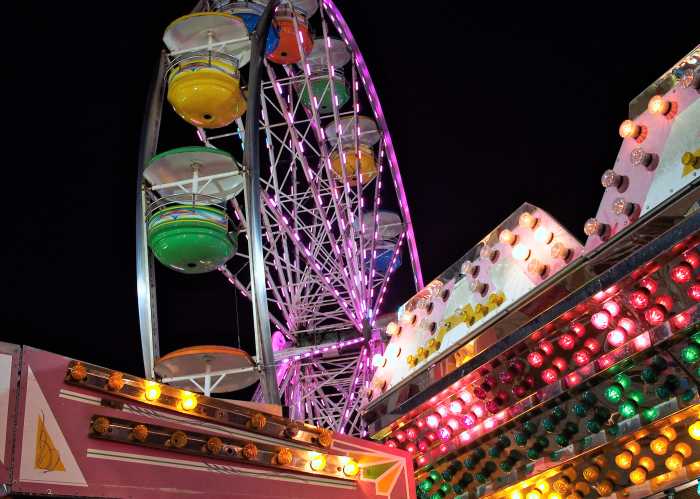
If you go: Arcadia Earth opens Friday at 718 Broadway, $33/Adults, $27/Students, Kids 4 and under FREE. Proceeds from all ticket sales will go to Oceanic Global.
Above the rumbling Astor Place subway station, there is an ocean of discovery awaiting visitors — upcycled plastic jellyfish and virtual reality sharks “swim” around cardboard coral and sea grottoes, and open waters unfold before you.
It’s the Arcadia Earth exhibit, and it’s all about what New Yorkers (and all of humanity) can do to reduce and reverse their effects on the planet. It opens on Friday.
Founder Valentino Vettori and his team have been working three months straight to install the 15,000-square-foot pop-up in the East Village, which features 15 rooms of artwork by environmental artists. The catch? They all used only recycled and biodegradable materials to build their works.

“We wanted to show how we can upcycle and make beautiful things with recycled materials,” Vettori told amNewYork this week. “I wanted to design it in the most sustainable way. At the end of this show, I want to walk away with the least amount of pollution.”
He and the artists — Basia Goszczynska, Samuelle Green, Tamara Kostianovsky, Etty Yaniv, Cindy Roe, Poramit Thantapalit, Jesse Harrod, Justin Bolognino, Katie Donahue, Katharina Hoerath, Charlotte Becket and Emmy Mikelson — have been collecting discarded plastic bags from offices, books thrown away by libraries, old carpet and discarded toilet paper from airports, and other biodegradable or recycled materials to use throughout the exhibit.
Arcadia Earth was constructed as sustainably as possible. There’s no plasterboard or plastic. Walls and floors are covered in printed recyclable fabric, and many of the effects are done through augmented and virtual reality.

The exhibit also delivers the not-so-pleasant statistics on pollution with a spoonful of sugar. Visitors are given a tablet to take with them through the rooms, where it picks up symbols that not only launches text, but “captures” swimming fish, large sea turtles, sharks and other animals.
Each room also has an introduction, laying out facts provided by Oceanic Global, a nonprofit ocean conservation organization, and the World Wildlife Fund.
Its coral reef room, for example, alerts visitors that a single drop of chemical sunscreen is enough to contaminate a coral reef environment the size of 6.5 Olympic-sized swimming pools.
A room about meat production, which is covered wall-to-wall with actual moss for a multisensory experience (it smells like a farm) and showcases a carcass-like artwork, explains that it takes more than 1,800 gallons of water to produce just 1 pound of beef.

One of the most impressive spaces is the “Rainbow Cave” made of 44,000 recycled plastic bags, representing the number used in New York State per minute.
Despite the grim stats, Arcadia, which is Greek for “in harmony with nature,” tells visitors how they can personally help, like using a mineral-based non-nano sunscreen, replacing one meat dish with a plant-based one every week, and taking groceries home in a paper or reusable bag.
Some rooms, like “Oxygen Oasis,” simply show the beauty of the world. This room has about a dozen VR headsets hanging from the ceiling, which when activated plunges the wearer under the ocean with dolphins and coral-dwelling fish.

“It doesn’t matter what we did already, it’s about what we’re gonna do,” Vettori said. “People get scared. The idea is to be positive — tell me the truth, but we can do this. We can help. Our choices matter.”
Arcadia Earth, located at 718 Broadway, opens Friday and is slated to run for three months, before hopefully heading on the road, Vettori said.
Tickets are $33 and $27 for students. Children 4 and younger get in for free. Proceeds from all ticket sales will go to Oceanic Global.



































